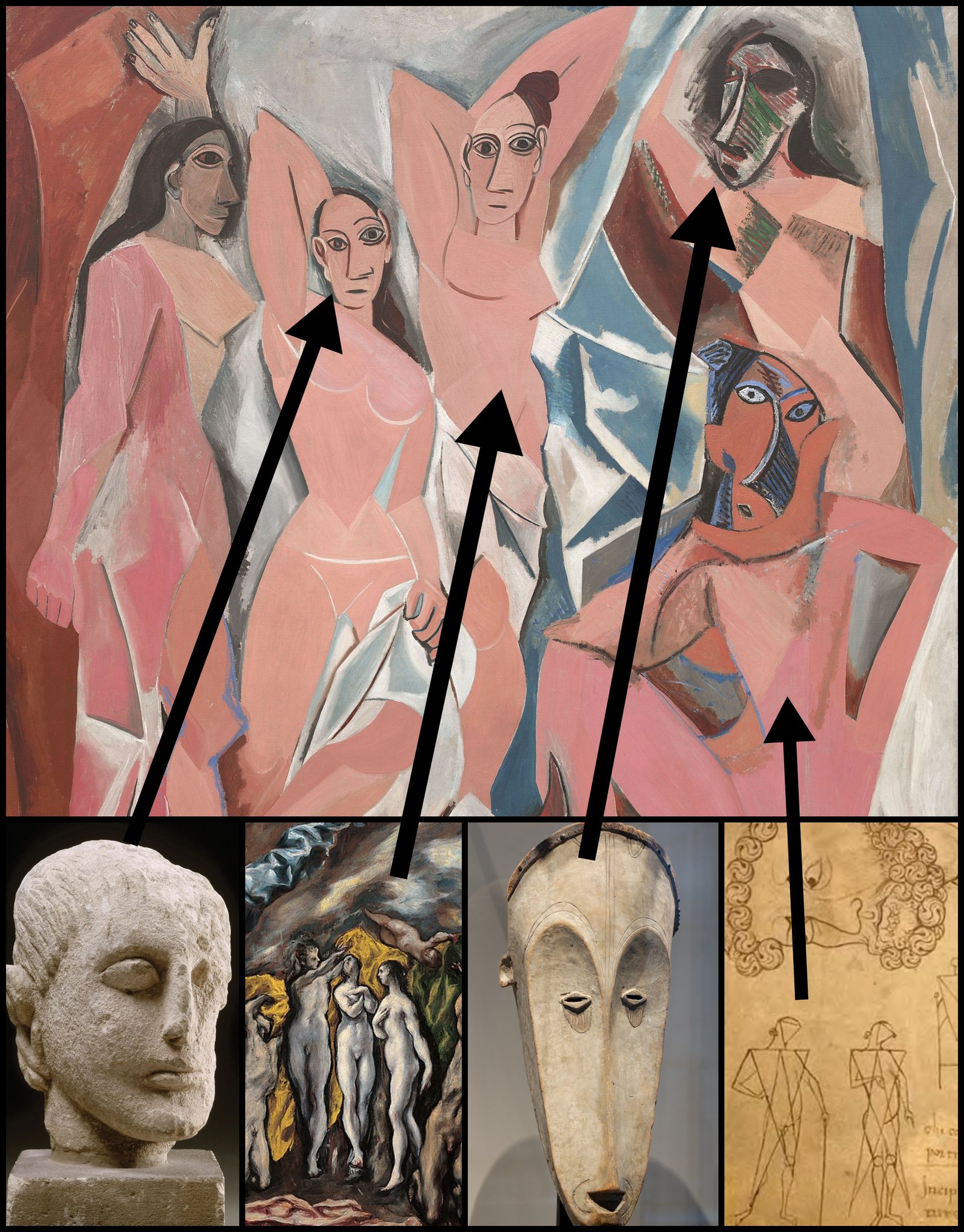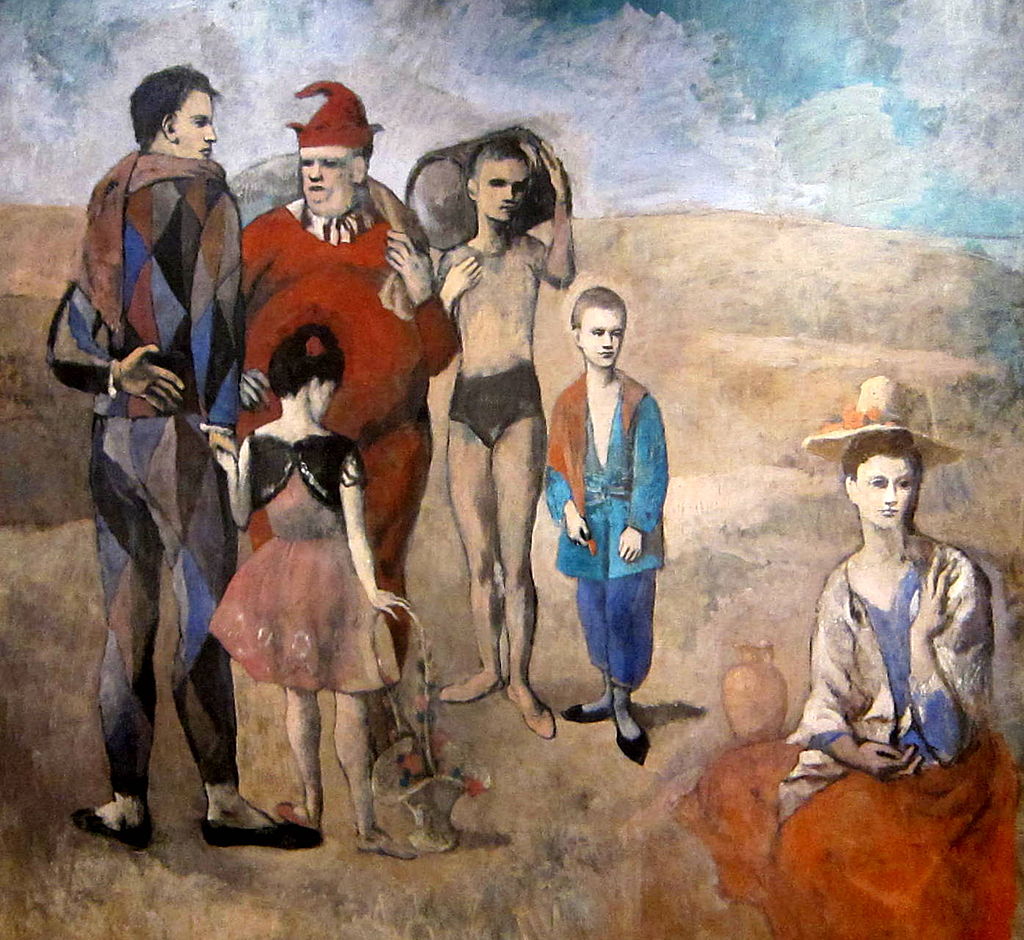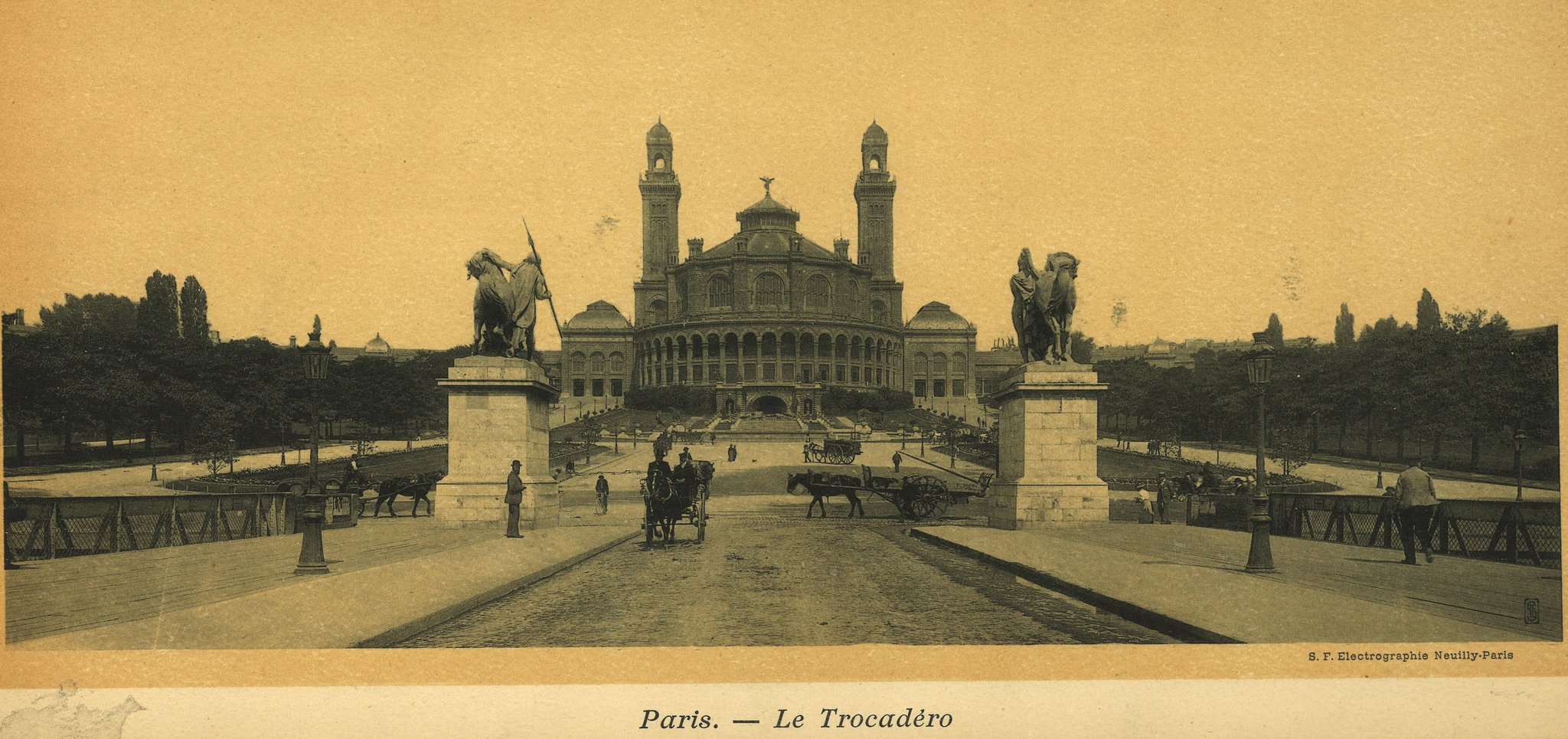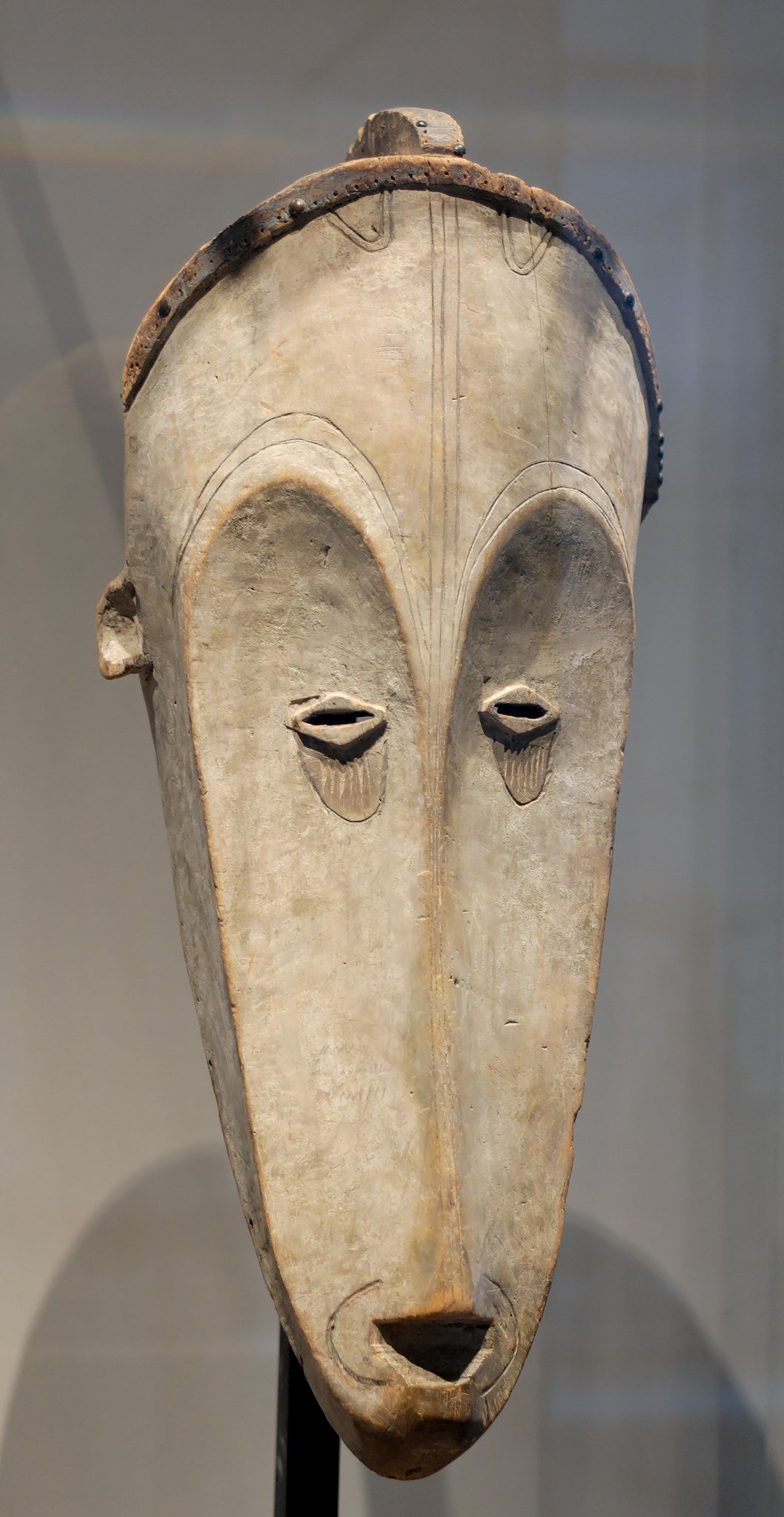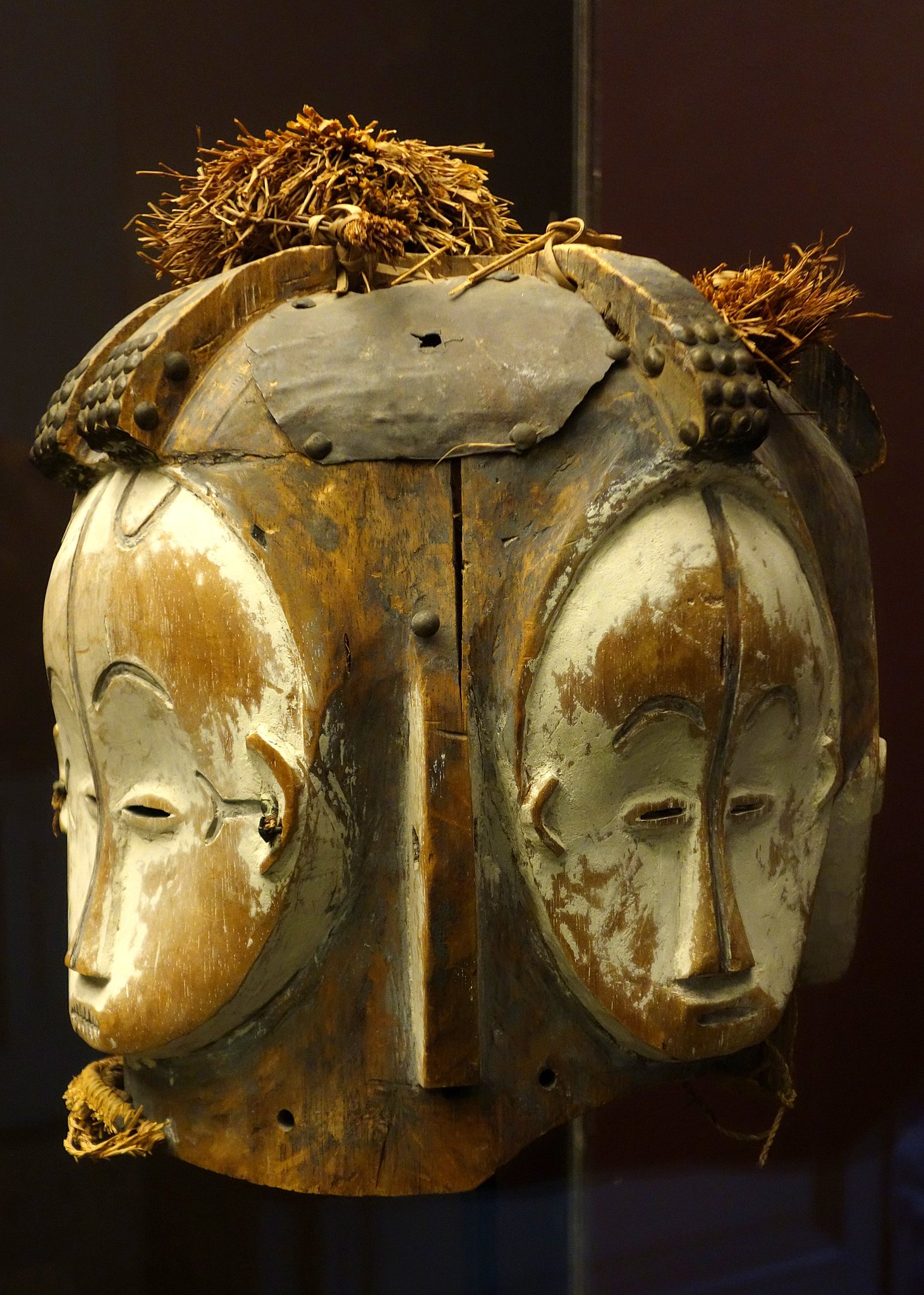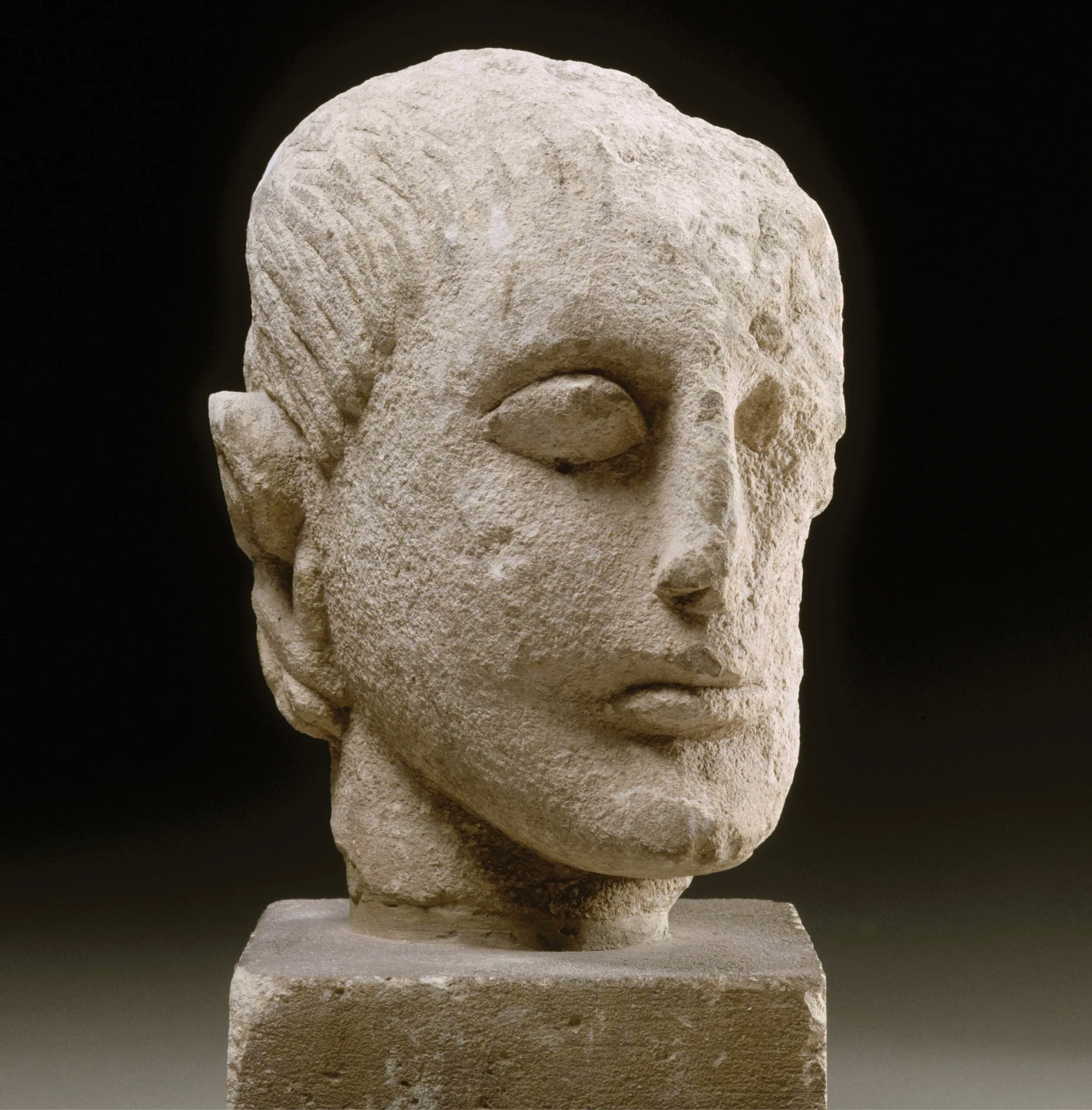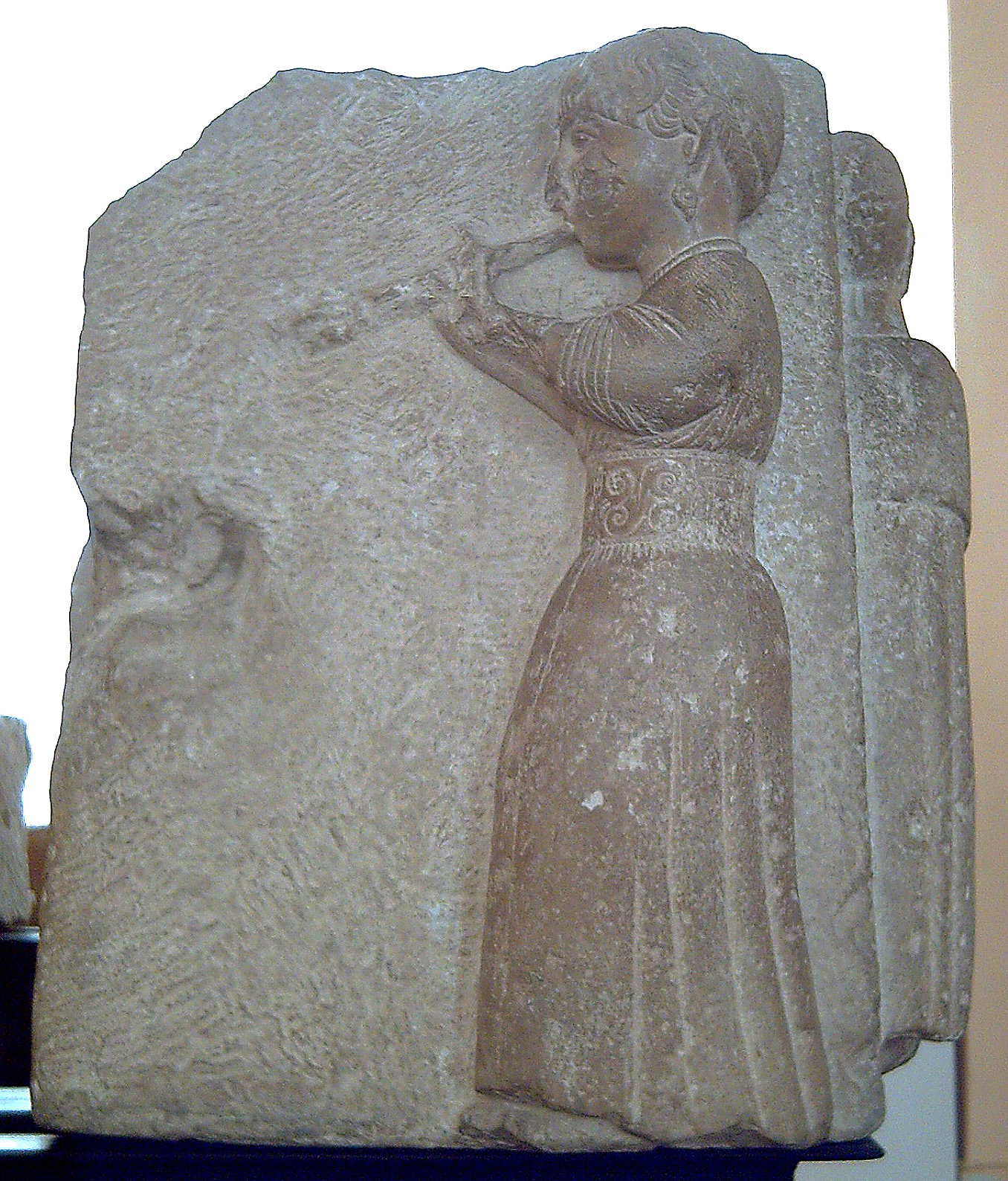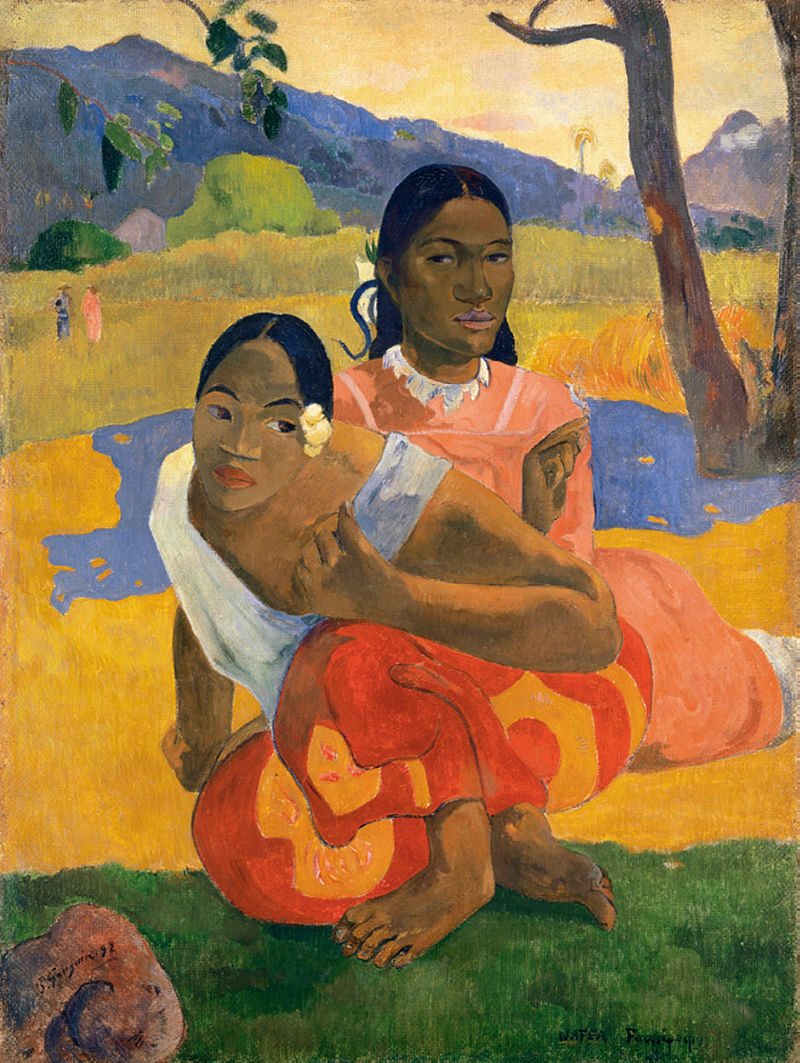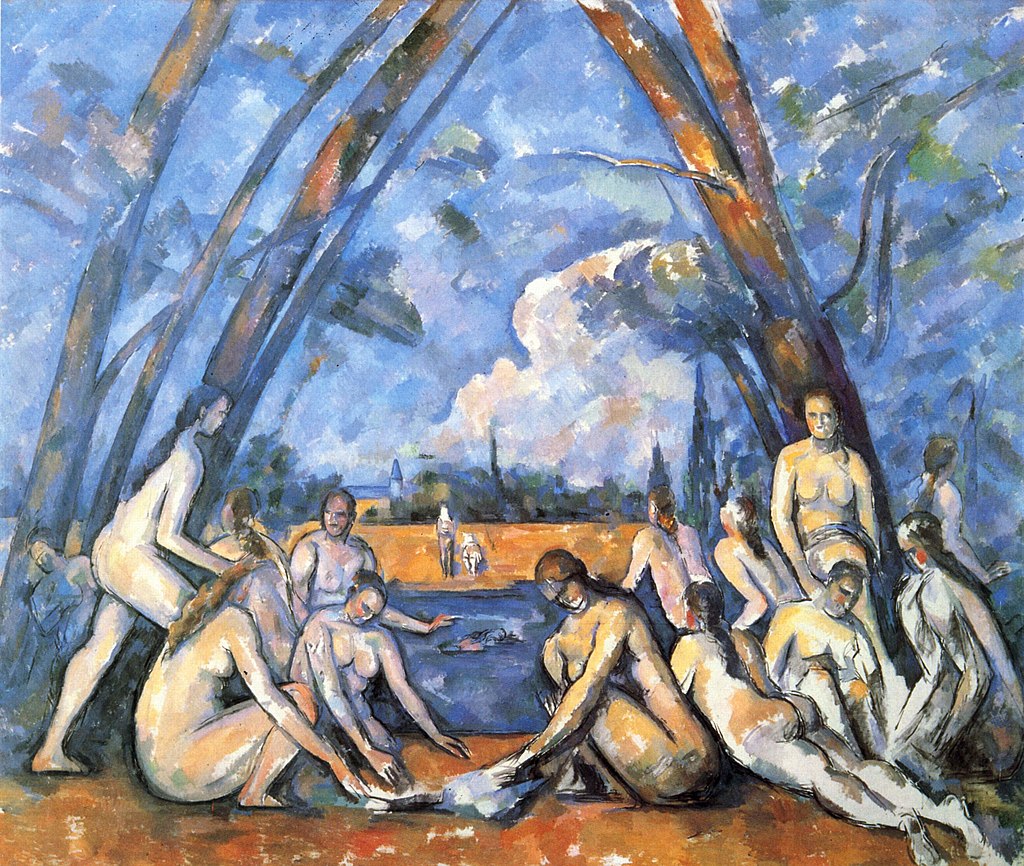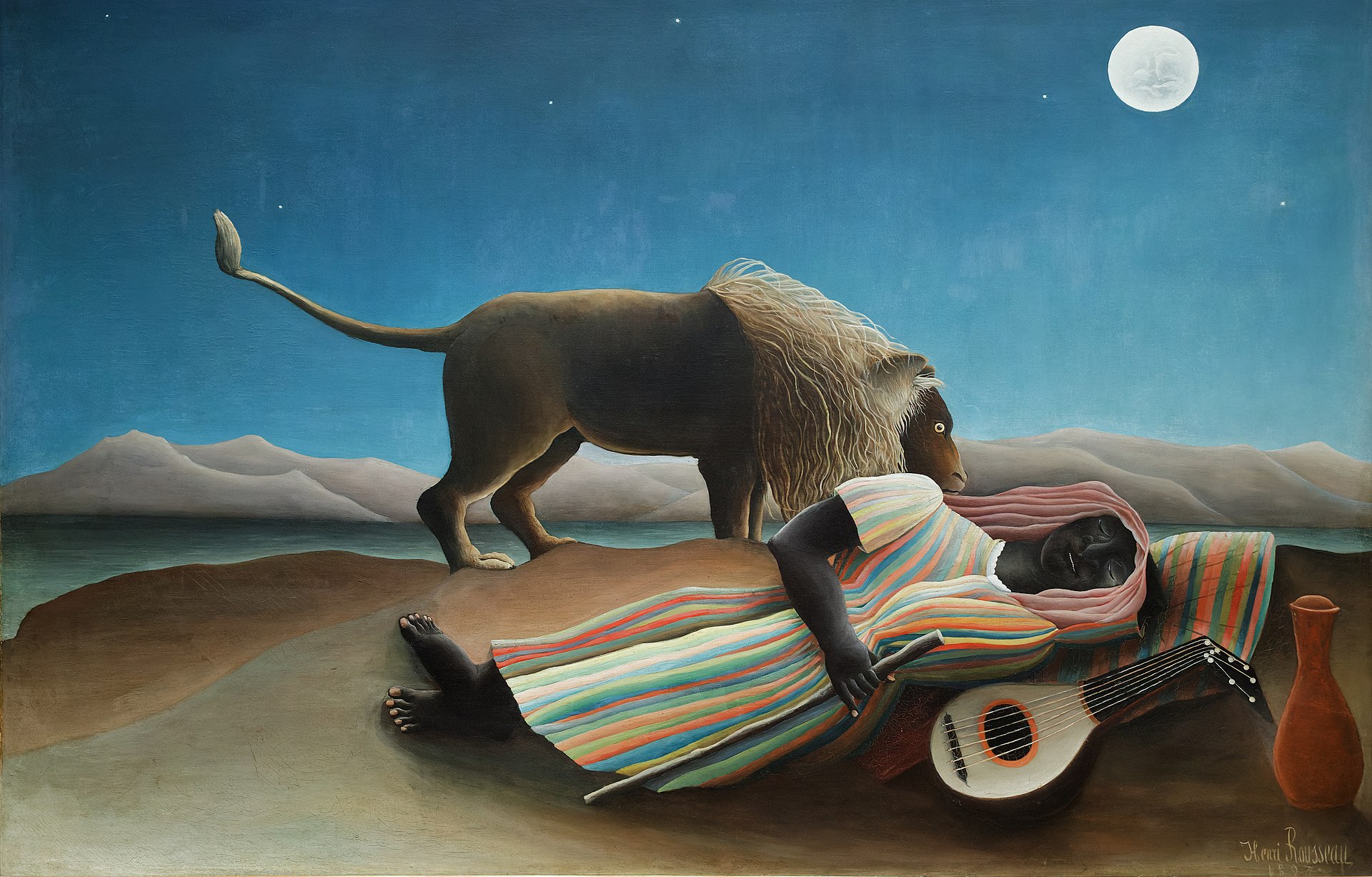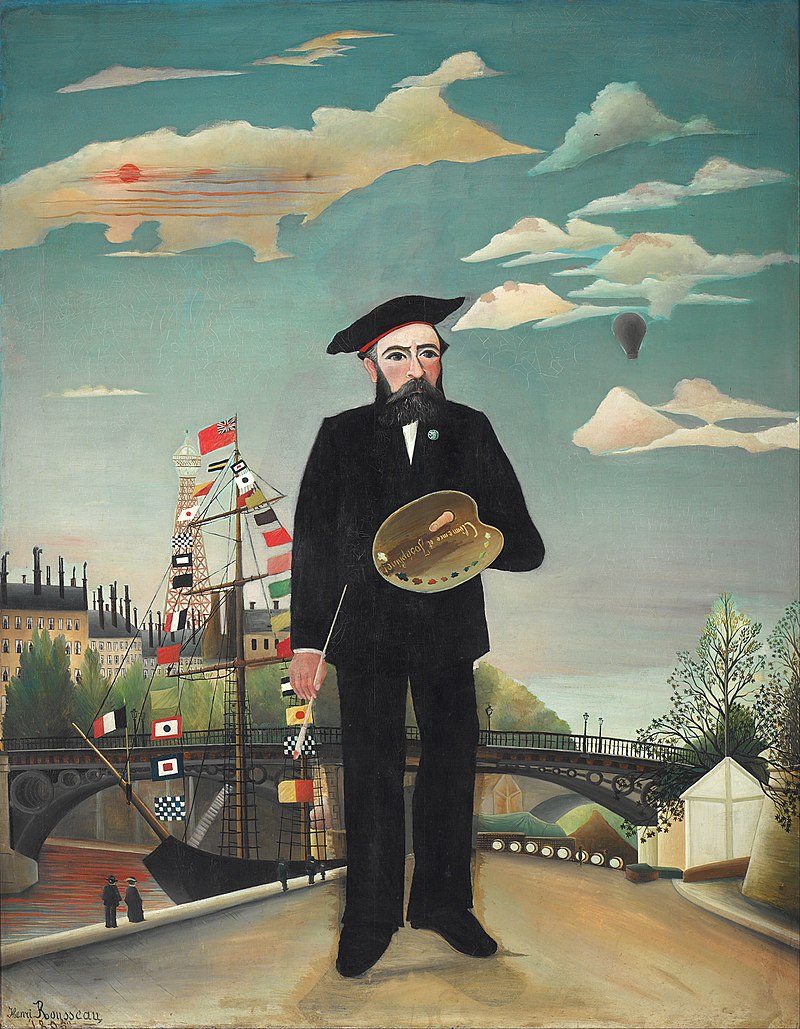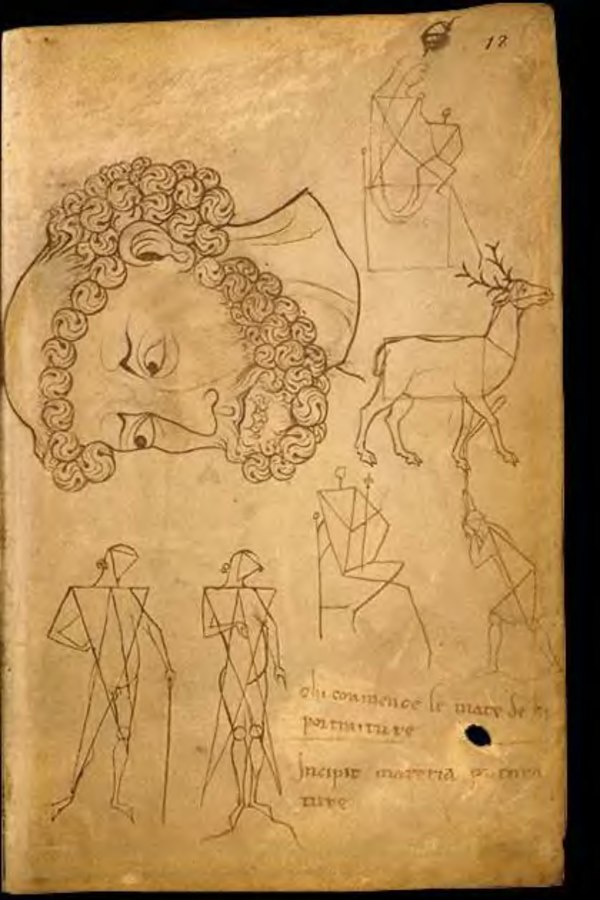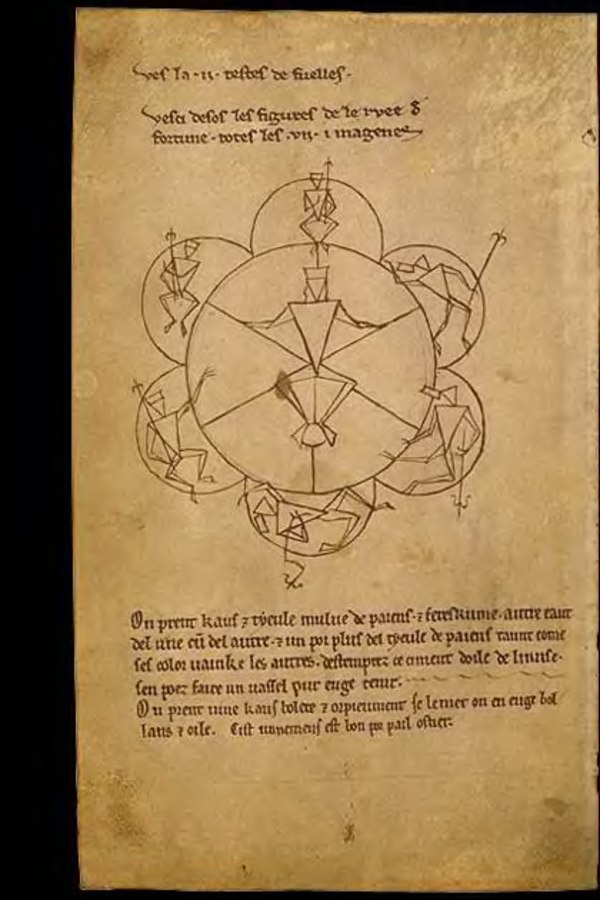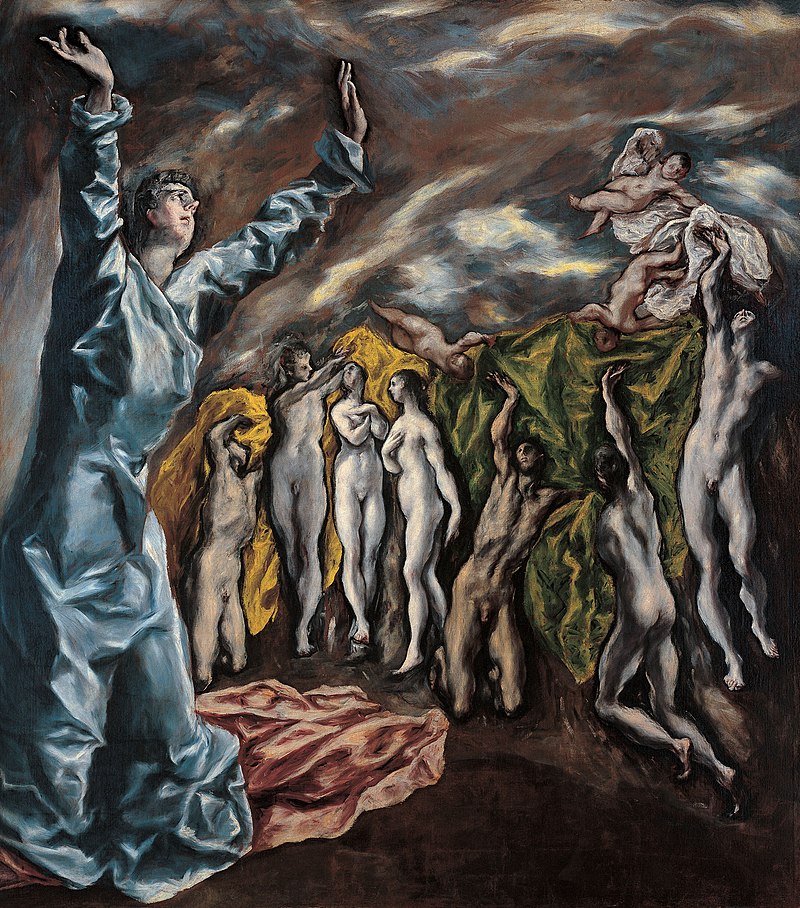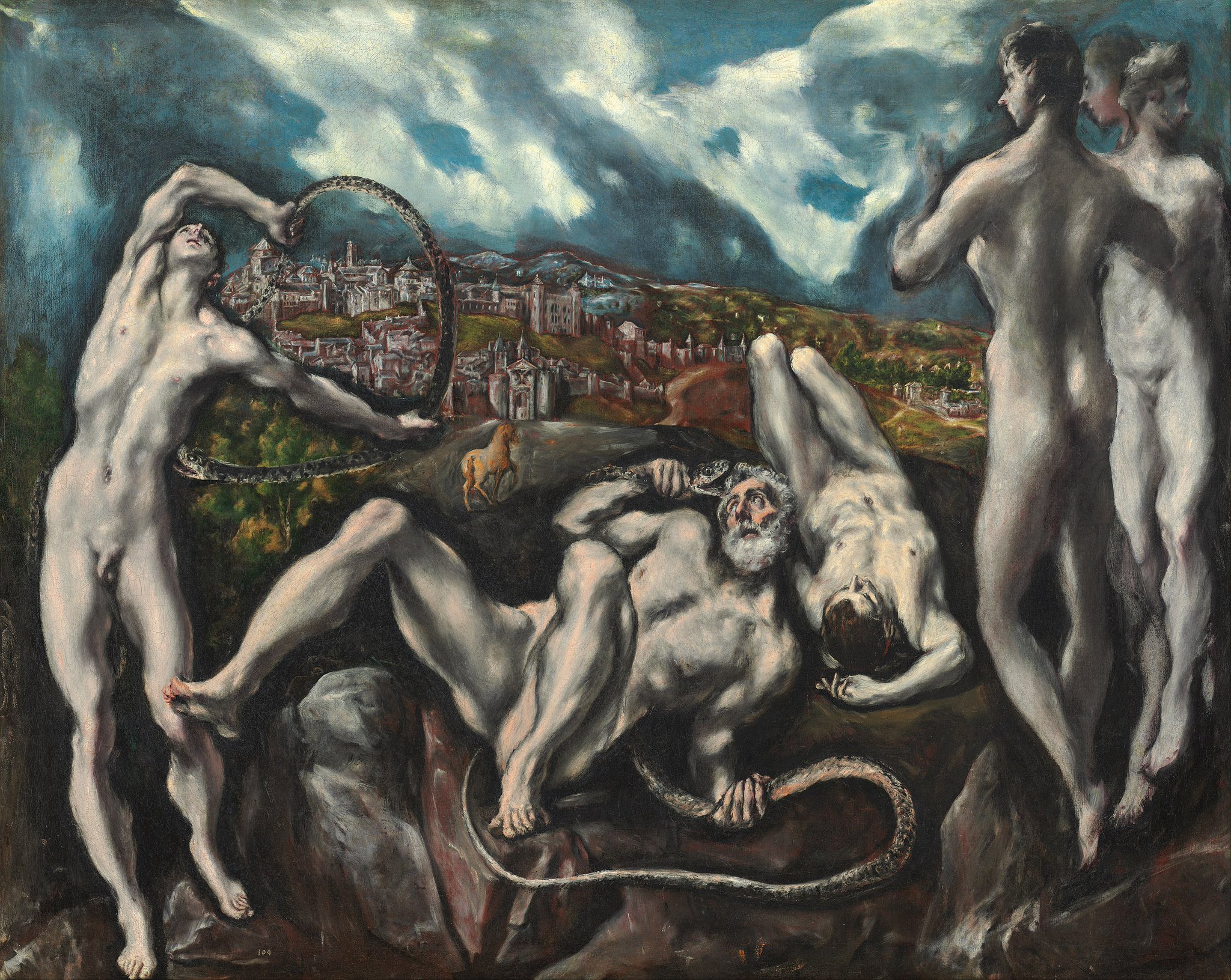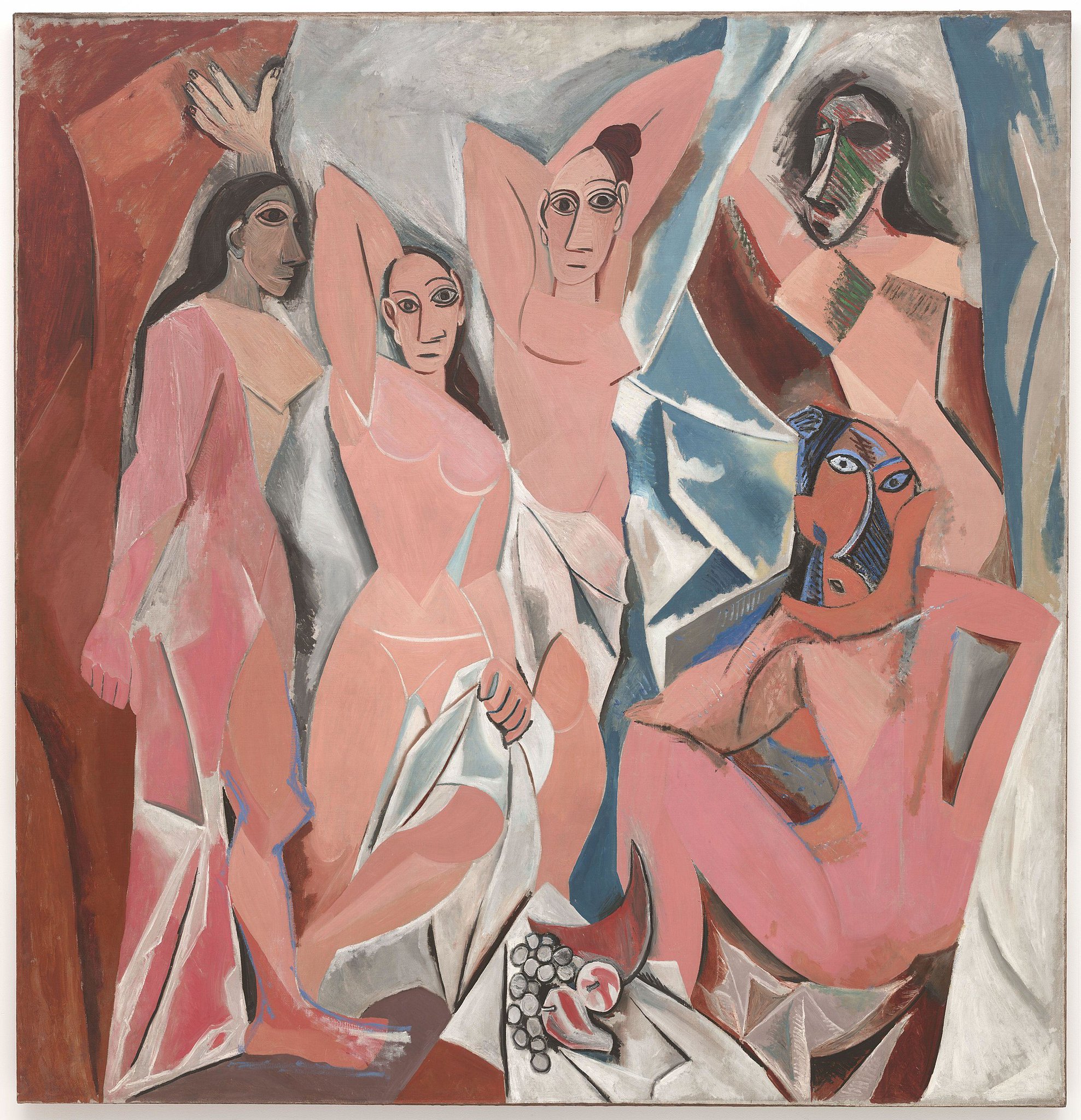Thread
Les Demoiselles d'Avignon, painted by Pablo Picasso in 1907, is probably the most influential work of modern art.
But he didn't come up with it all himself.
Picasso borrowed from the art of West Africa, ancient Iberian sculpture, an obscure Medieval architect, and El Greco...
But he didn't come up with it all himself.
Picasso borrowed from the art of West Africa, ancient Iberian sculpture, an obscure Medieval architect, and El Greco...
In the first years of the 20th century Pablo Picasso's art looked like this, far from the cubes, the abstraction, the vivid colours, and the strangeness of his most famous paintings.
So what changed?
So what changed?
In 1907 Picasso, then aged 26, visited the Musée d'Ethnographie du Trocadéro in Paris.
It was filled with art and other objects taken there by the French Empire, among them some ceremonial masks of the Fang from West Africa.
It was filled with art and other objects taken there by the French Empire, among them some ceremonial masks of the Fang from West Africa.
For many artists, including Picasso, they were a revelation.
They saw these masks as combining simplicity with profound expressive intensity. Compared with European art at the time, which they considered conceited and frivolous, these masks exemplified art's metaphysical power.
They saw these masks as combining simplicity with profound expressive intensity. Compared with European art at the time, which they considered conceited and frivolous, these masks exemplified art's metaphysical power.
The similarity between these Fang masks on some of the faces of the Demoiselles d'Avignon is clear.
And Picasso was also vocal about the influence of sculptures created by the pre-Roman Iberian culture of ancient Spain, recently discovered and displayed at the Louvre in 1904.
And Picasso was also vocal about the influence of sculptures created by the pre-Roman Iberian culture of ancient Spain, recently discovered and displayed at the Louvre in 1904.
There were contemporary influences, too.
In 1906 and 1907 posthumous exhibitions were held at the Salon d'Automne in Paris, for Paul Cézanne and Paul Gauguin.
Both had a major influence on the avant-garde artists of the day generally - and also, crucially, on Picasso.
In 1906 and 1907 posthumous exhibitions were held at the Salon d'Automne in Paris, for Paul Cézanne and Paul Gauguin.
Both had a major influence on the avant-garde artists of the day generally - and also, crucially, on Picasso.
Gauguin had travelled to Tahiti, in the Pacific, where he sought freedom not only from the art but the culture of Western Europe.
There he embraced vivid colours and a style inspired by the art of the peoples of Tahiti. Once back in Europe, these paintings were revolutionary.
There he embraced vivid colours and a style inspired by the art of the peoples of Tahiti. Once back in Europe, these paintings were revolutionary.
And then there was Paul Cézanne.
His increasingly geometric paintings, which moved further away from the accurate representation of reality than any of his contemporaries, would serve as the direct precursor to Picasso's famous Cubism.
His increasingly geometric paintings, which moved further away from the accurate representation of reality than any of his contemporaries, would serve as the direct precursor to Picasso's famous Cubism.
Picasso was also friends with Henri Rousseau.
He was a tax collector for most of his life and only started painting in his forties. Though Rousseau's art was mocked by critics, it proved an inspiration for Picasso, freed from any establishment ideas about what art should be.
He was a tax collector for most of his life and only started painting in his forties. Though Rousseau's art was mocked by critics, it proved an inspiration for Picasso, freed from any establishment ideas about what art should be.
Another, more obscure influence was the 13th century French architect Villard de Honnecourt.
His drawings - which include some rather geometric sketches of human figures - were rediscovered in the 19th century and published in 1906; Picasso owned a copy of this book.
His drawings - which include some rather geometric sketches of human figures - were rediscovered in the 19th century and published in 1906; Picasso owned a copy of this book.
To complete the matrix of influences there is The Opening of the Fifth Seal, painted by El Greco in 1614.
El Greco, though famous now, was an obscure artist for centuries. This painting was owned by Picasso's friend, Ignacio Zuloaga, and he was inspired by its composition.
El Greco, though famous now, was an obscure artist for centuries. This painting was owned by Picasso's friend, Ignacio Zuloaga, and he was inspired by its composition.
El Greco's work was markedly different from other art of the 1600s - three hundred years before the modernists El Greco was already departing from reality.
And it's hard not to see the influence of El Greco's elongated, contorted forms on those of Picasso's famous Demoiselles.
And it's hard not to see the influence of El Greco's elongated, contorted forms on those of Picasso's famous Demoiselles.
What do all these influences have in common?
They were either entirely non-European or had not, by virtue of their age or style, consciously or otherwise, been shaped by the ideals of the Renaissance and the many centuries of European art that had followed in its wake.
They were either entirely non-European or had not, by virtue of their age or style, consciously or otherwise, been shaped by the ideals of the Renaissance and the many centuries of European art that had followed in its wake.
Much of the avant-garde was about subverting society's accepted view of art.
And in the Demoiselles this movement found its masterpiece - the morning star of Cubism and of all art that has followed since, a radical break with the past and an attempt to craft the future.
And in the Demoiselles this movement found its masterpiece - the morning star of Cubism and of all art that has followed since, a radical break with the past and an attempt to craft the future.
